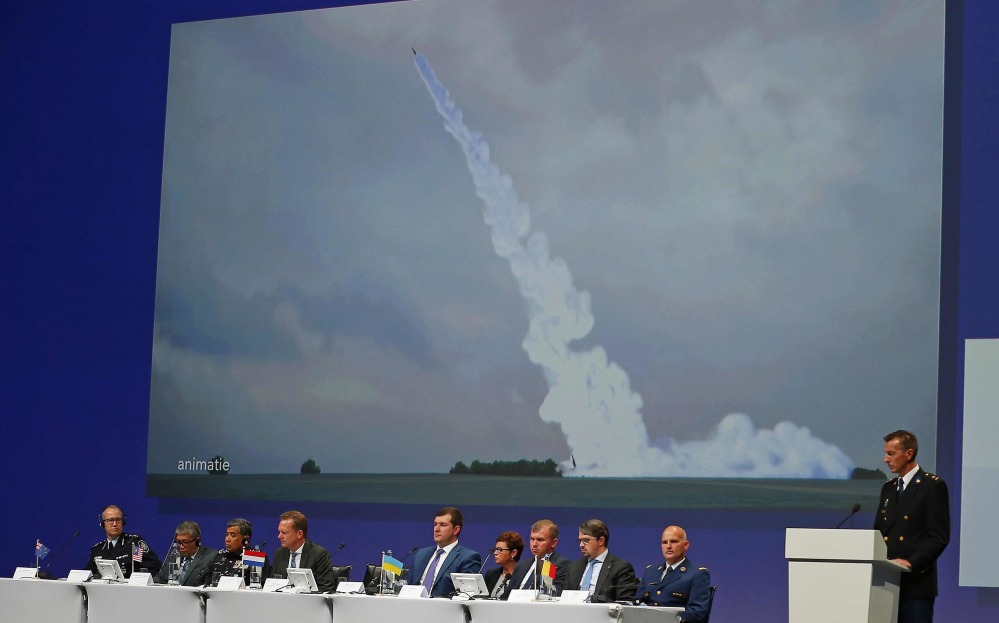KIEV, Ukraine — A Dutch-led investigative team said Wednesday that the surface-to-air missile that downed a passenger jet over eastern Ukraine in 2014, killing all 298 people aboard, came from Russia and was fired from territory held by pro-Moscow separatists.
Investigators stopped short of directly accusing Russia of complicity in the attack on the Boeing 777 and declined to name any suspects publicly. But the briefing was seen in Russia and in the West as a virtual indictment of Moscow, prompting Russian protests as investigators said they would continue trying to determine who ordered the strike.
Both Russia and the rebels in Ukraine deny any role in the July 2014 attack on Malaysia Airlines Flight 17, which was traveling from Amsterdam to Kuala Lumpur, the Malaysian capital.
The findings are intended to be used in a possible criminal trial. But even if suspects are identified, it is unclear how they would be apprehended, especially if they are in Russia or in separatist-held Ukrainian territory.
The investigators concluded that the plane was shot down with a missile launched from what the Russians call a Buk TELAR battery, said Wilbert Paulissen, a senior investigator in the Dutch national police.
The missile launch vehicle “was brought in from the territory of the Russian Federation and after launch was subsequently returned to Russian Federation territory. This conclusion is based largely on forensic investigation,” he said.
The system thought to be used in the missile firing – four surface-to-air missiles mounted on a launch vehicle – was smuggled into Ukraine from Russia just hours before the missile was fired, the investigators said at a news conference in Amsterdam. The launch system, also known as an SA-11 “Gadfly,” was returned to Russia the day after the attack, which left bodies and wreckage strewn across farms and fields of sunflowers.
The U.S. State Department said the findings matched those made by American officials, and British Foreign Secretary Boris Johnson said that “we ask that Russia now engages constructively with the findings and ongoing investigation.”
The evidence was based on intercepts of telephone conversations between separatist fighters in eastern Ukraine, as well as open-source photographs, eyewitness accounts and satellite data, investigators said. Much of the material was first identified by online activists and citizen journalists, including the influential Bellingcat.com website, which has been targeted by Russian government hackers, according to reports.
While a previous Dutch-led safety inquiry had said the missile was most likely launched from separatist-held territory, Wednesday was the first time that investigators said it had been transported across the border from Russia.
The team members said that they had identified more than 100 people linked to the downing of the plane and that they would seek to identify “who ordered the plane to be shot down.” The investigation has been extended into 2018.
No venue has been given for a possible trial.
Send questions/comments to the editors.



Success. Please wait for the page to reload. If the page does not reload within 5 seconds, please refresh the page.
Enter your email and password to access comments.
Hi, to comment on stories you must . This profile is in addition to your subscription and website login.
Already have a commenting profile? .
Invalid username/password.
Please check your email to confirm and complete your registration.
Only subscribers are eligible to post comments. Please subscribe or login first for digital access. Here’s why.
Use the form below to reset your password. When you've submitted your account email, we will send an email with a reset code.